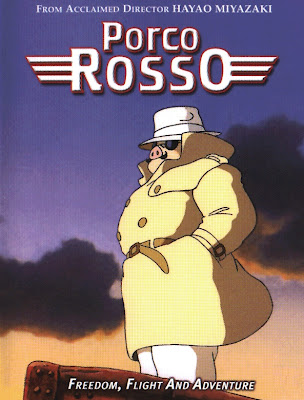Peter Pan (1924), directed by Herbert Brenon, 3.5 stars
There’s really no need to recount the plot of Peter Pan; the original
stage play, written by James Barrie in 1905, his expanded novel several years
later, and the many subsequent incarnations on stage and screen are so
well-known that the story has become part of the cultural fabric throughout most
of the English-speaking world. The 1924
silent film starring Betty Bronson as Peter in her first starring role was the earliest
filmed version that I’m aware of, and it alternately closely follows and freely
takes liberty with the source material.
George Ali in his only appearance on film (according to IMDB) is wonderful
as Nana, the faithful watchdog, who is sent to the doghouse on the night of
Peter’s arrival and, thus, is unable to intervene on the children’s
behalf. Not that they would have wanted
her to. They are positively rapt with
the prospect of flying off to Neverland to cavort with pirates and mermaids and
Peter’s band of lost boys. Betty Bronson
captures all of the charm of the self-absorbed Peter, perhaps, borrowing
from Maud Adams, who first played him on the Broadway stage. Bronson is no doubt also a
model for later stage performers, most notably, Jean Arthur (in 1950 with Boris
Karloff as Captain Hook and music by Leonard Bernstein), Mary Martin (in 1954
and is probably the best known musical adaptation), Sandy Duncan (1979), and
Cathy Rigby (throughout the 1990s). In
one minute she’s leaping about the room, crowing with confidence and serene
smugness, and in the next, she’s soaring gracefully from wall to wall joyfully
teaching the children to fly.
Director Herbert Brenon and cinematographer James Wong Howe, both of whom would team up again for one of Lon Chaney’s greatest performances
in the film, “Laugh,
Clown, Laugh,” insert numerous magical effects, including Tinker Bell’s
flickering flights around the children’s darkened bedroom, and later, the fairy
in miniature, holding on for dear life to the huge handle of a cabinet drawer
as her skimpy raiment blows fiercely about her.
Rather peculiar is the Americanization of the lost boys, who upon routing the
pirates, sing “My country ‘tis of thee” and take down the Jolly Roger, raising
in its stead the Stars and Stripes. This
seems bizzare given Barrie’s Scottish heritage and the manifestly London
location--Bloomsbury, according to Barrie’s notes in the stage play. Perhaps, this is an alternate version made specifically for U.S markets.
As with “The Little Princess,” I was fortunate to attend a screening of “Peter Pan” with harp accompaniment and a lovely, original score by Leslie McMichael. A well-written, well-executed, live musical performances really enhances a silent film, and McMichael's paean to Peter Pan is proof positive that this is so.

.jpg)

.jpg)
.jpg)

.jpg)


.jpg)


.jpg)
.jpg)






